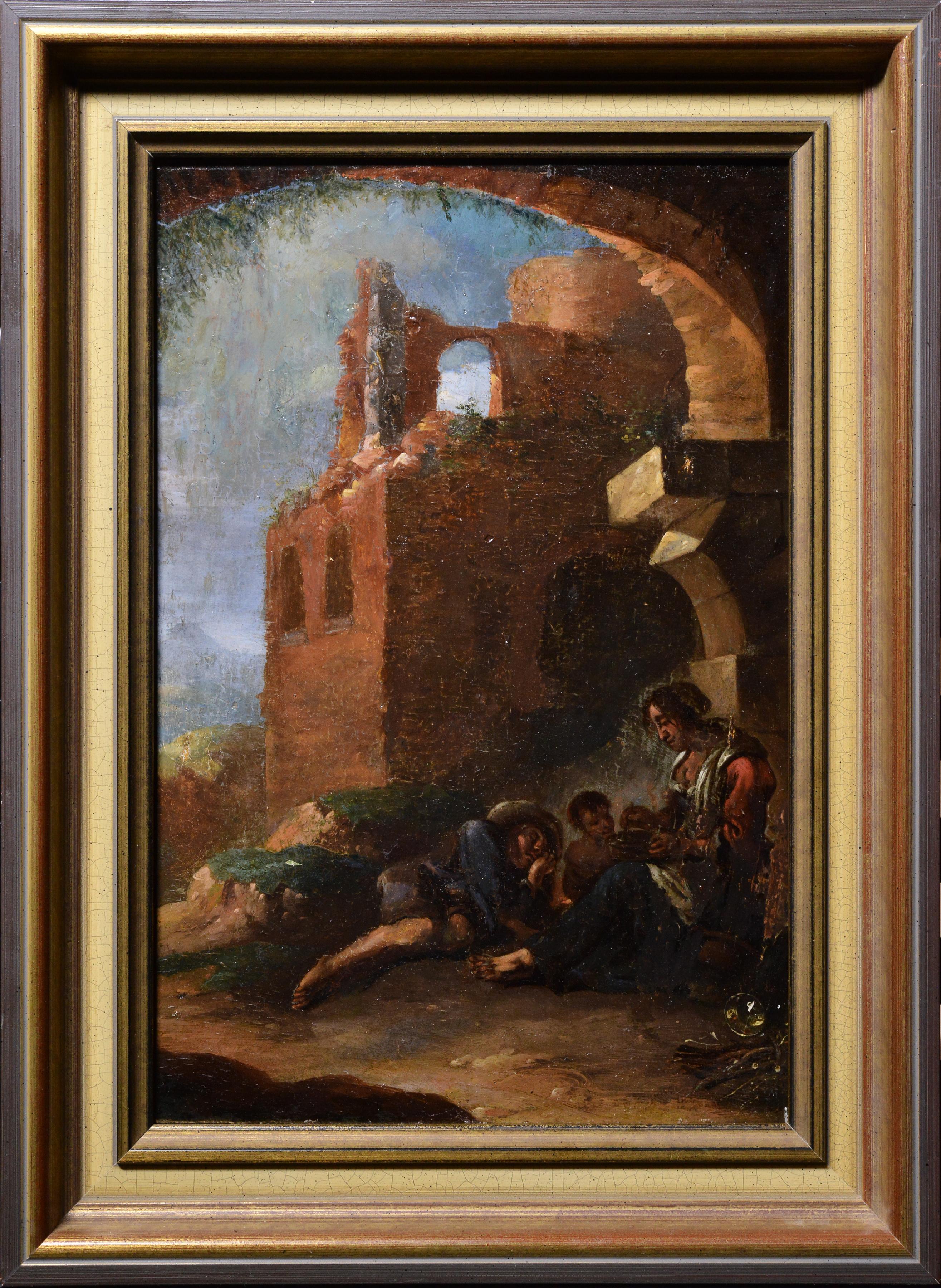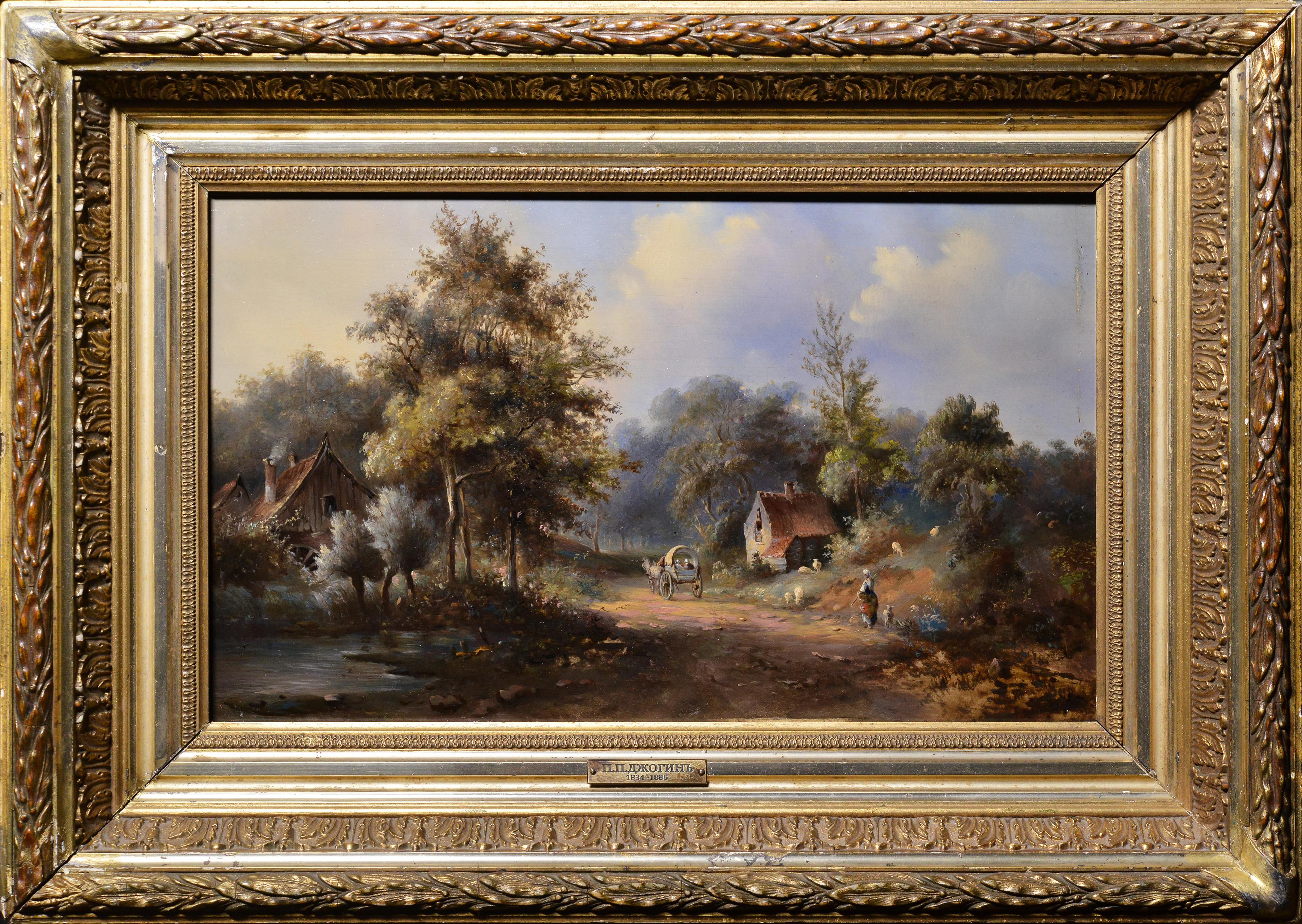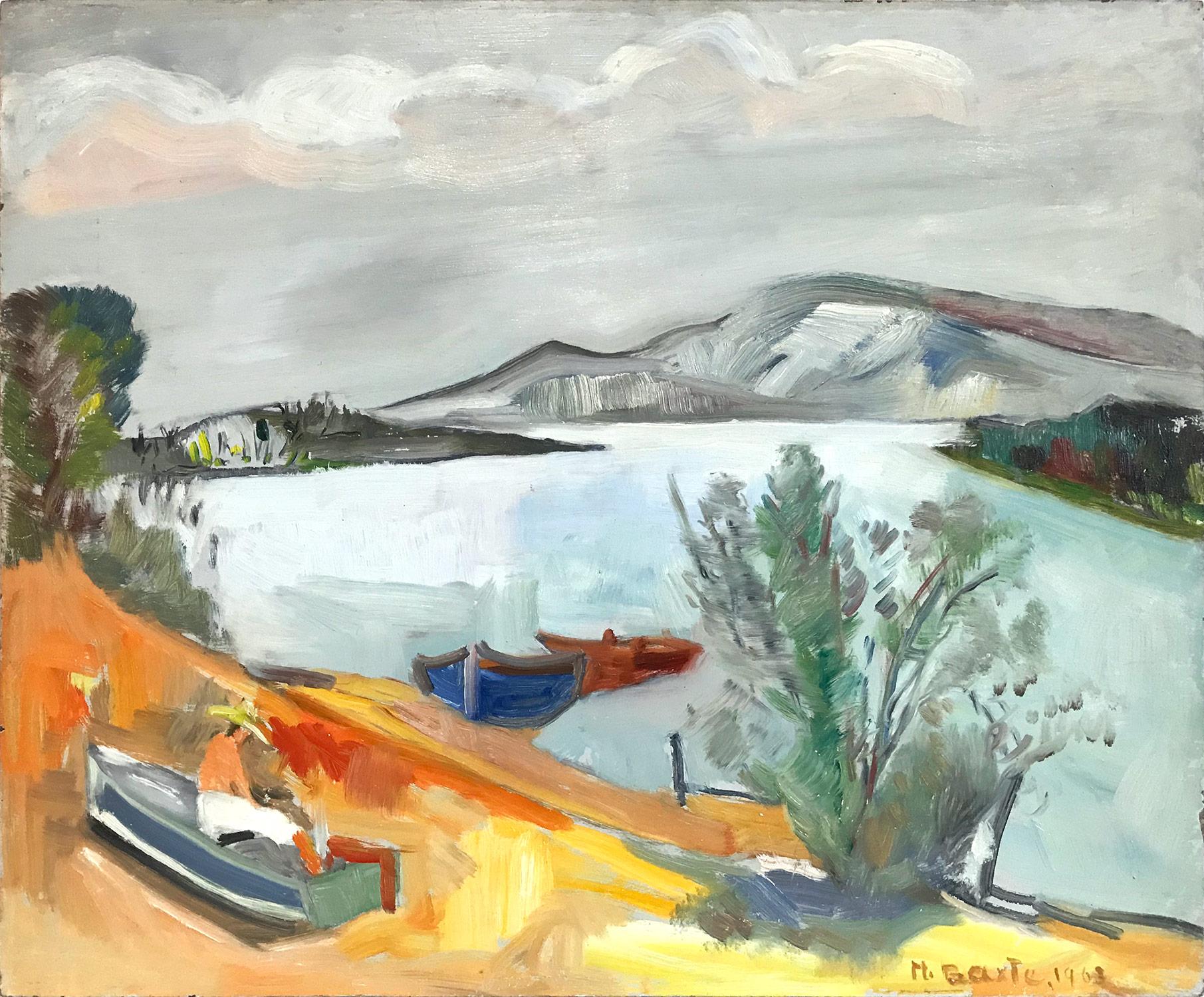Items Similar to Fritz Beinke, Cheerful Winter Landscape with Children Playing and Sledding.
Want more images or videos?
Request additional images or videos from the seller
1 of 17
Fritz BeinkeFritz Beinke, Cheerful Winter Landscape with Children Playing and Sledding.
About the Item
Cheerful winter landscape with children playing and sledding.
Signed lower left. Age-related condition.
Dimensions with frame: 48 cm x 58.5 cm
Dimensions without frame: 25.5 cm x 36 cm
- Creator:Fritz Beinke (1842 - 1907, German)
- Dimensions:Height: 23.04 in (58.5 cm)Width: 18.9 in (48 cm)
- Medium:
- Period:
- Condition:
- Gallery Location:Berlin, DE
- Reference Number:1stDibs: LU986110393222
About the Seller
4.9
Vetted Seller
These experienced sellers undergo a comprehensive evaluation by our team of in-house experts.
1stDibs seller since 2018
47 sales on 1stDibs
Typical response time: <1 hour
- ShippingRetrieving quote...Ships From: Berlin, Germany
- Return PolicyA return for this item may be initiated within 7 days of delivery.
More From This SellerView All
- Oil Painting. View of famous Berlin Streets, Unter den Linden and Friedrichstr.Located in Berlin, DEDecorative oil painting. View of the most famous Berlin streets. Unter den Linden and Friedrichstr. The painting shows a very busy scene (after the r...Category
20th Century Figurative Paintings
MaterialsPlywood, Oil
- R. Holst, 1944, Oil Painting, Walk through the Forest, Mother with Child and DogLocated in Berlin, DEDecorative Painting by: R. Holst, 1944, Walk through the forest, mother with child and dog. Signed and dated lower right. Dimensions without frame: 61 ...Category
20th Century Landscape Paintings
MaterialsOil, Plywood
- Romantic Landscape View, Oil on Canvas. 19th Century.Located in Berlin, DERomantic landscape view, oil on canvas. 19th century. Dimensions including frame 76.5cm x 100cm Dimensions without frame 55.5cm x 79cm.Category
19th Century Landscape Paintings
MaterialsCanvas, Oil
- On the Red Square, Kremlin, Moscow - Realist, Landscape Painting, 20th CenturyLocated in Berlin, DEMoscow. "On the red square". Kremlin, St. Basil's Cathedral. Russian art. Very good condition. Unframed. Solovykh Gennady Ivanovich (1932, Moscow). Member of the Union of Artists ...Category
1970s Realist Figurative Paintings
MaterialsCanvas, Oil
- Antique painting, 19th century, oil on canvas, harvest by the river.Located in Berlin, DEAntique painting, 19th century, oil on canvas, harvest by the river. Signed lower right. Dimensions without frame. Paintings by Alexandre Kircher have already raised more than $ 20...Category
19th Century Landscape Paintings
MaterialsCanvas, Oil
- Eugen Felix Prosper Bracht, 1917, Harvesting with a Hay Wagon and Team of Oxen.By Eugen BrachtLocated in Berlin, DEEugen Felix Prosper Bracht, 1917, Harvesting with a hay wagon and team of oxen. Large and decorative painting by the world-renowned artist Eugen Bracht. Fro...Category
Early 20th Century Impressionist Figurative Paintings
MaterialsCanvas, Oil
You May Also Like
- Rustic Cottage - Oil on Plywood by Franco Viola - 1980Located in Roma, ITRustic Cottage is an original painting, realized in 1980 by Franco Viola. Mixed colored painting on plywood. Hand signed by the artist on the lower left...Category
1980s Figurative Paintings
MaterialsPlywood, Oil
- Italian Grotto in Ruins Street Scene with Resting Family 18 Century Oil PaintingLocated in Stockholm, SEVery well executed mid-18th century artwork, rather oil study, depicts resting family sheltering from the scorching midday sun in grotto shape arch in ruined part of town. Mother fee...Category
Mid-18th Century Realist Landscape Paintings
MaterialsWood, Oil, Wood Panel
- Pastoral Country Landscape Travelers on a Forest Road 19th century Oil PaintingLocated in Stockholm, SEBrass plate leads to Russian artist Pavel Pavlovich Dzhogin (1834 - 1885). This 19th century oil painting beautifully captures a serene rural scene with travelers on a cart traveling...Category
Late 19th Century Realist Landscape Paintings
MaterialsWood, Oil, Wood Panel
- Down to Porthtowan [2023] Oil Painting, Landscape, Coastal, Cornwall, SeascapeLocated in Deddington, GBDown to Porthtowan is an original painting by Eleanor Woolley. This painting was painted Plein Air on the footpath down from Mount Pleasant Eco Park. It shows the lovely heather bank...Category
21st Century and Contemporary Impressionist Landscape Paintings
MaterialsCanvas, Oil, Wood
- "Landscape Scene of Mexican Villagers" Expressionistic Oil Painting on MasoniteBy Michael BaxteLocated in New York, NYA strong modernist oil painting depicted in 1971 by Russian painter Michael Baxte. Mostly known for his abstracted figures on canvas or street scenes, this piece is a wonderful representation of his landscape paintings, with expressive use of color, shape, and form. Later in his career, Baxte explores Expressionism, infusing both European and North American stylistic trends. This piece is from later in his career, but we can feel this underlying style throughout. Art measures 18 x 21.75 inches Michael Posner Baxte was born in 1890 in the small town of Staroselje Belarus, Russia. For the first half of the 19th century it was a center of the Chabad movement of Hasidic Jews, but this group was gone by the middle of the 19th century. By the time the Baxte family immigrated to the United States at the beginning of the 20th century, the Jewish population numbered only on the hundreds. The native language of the Baxte family was Yiddish. It is likely that the death of Michael Baxte’s father triggered the family’s immigration. Three older brothers arrived in New York between 1903 and 1905. Michael and his mother, Rebecca, arrived in 1907. By 1910 Michael, his mother, and brother, Joseph, were living in New Orleans and may have spent some time on a Louisiana plantation. Around 1912, Michael Baxte returned to Europe to study the violin. In 1914 he, his mother, and Joseph moved to New York City. Meanwhile, in Algeria, a talented young woman painter, Violette Mege, was making history. Since for the first time, a woman won the prestigious Beaux Art competition in Algeria. At first, the awards committee denied her the prize but, with French government intervention, Mege eventually prevailed. She won again 3 years later and, in 1916, used the scholarship to visit the United States of America. When Violette came to New York, she met Baxte, who was, by then, an accomplished violinist, teacher, and composer. Baxte’s compositions were performed at the Tokyo Imperial Theater, and in 1922 he was listed in the American Jewish Yearbook as one of the prominent members of the American Jewish community. As a music teacher he encouraged individual expression. Baxte stated, “No pupil should ever be forced into imitation of the teacher. Art is a personal experience, and the teacher’s truest aim must be to awaken this light of personality through the patient light of science.” By 1920 Michael Baxte and Violette Mege were living together in Manhattan. Although they claimed to be living as husband and wife, it seems that their marriage did not become official until 1928. On their “unofficial” honeymoon around 1917, in Algiers, Baxte confided to her his ambition to paint. There and later in New Mexico where the wonderful steeped sunlight approximates the coloring of Algiers, she taught him his heart’s desire. He never had any other teacher. She never had any other pupil. For ten years she devoted all her time, energy, and ambition to teaching, encouraging, inspiring him. Then in 1928, their mutual strivings were rewarded, as his works were being chosen as one of the two winners in the Dudensing National Competition for American Painters. Out of 150 artists from across the country participated in the Dudensing, and Michael Posner Baxte and, Robert Fawcett, were the winners. In his 1924 naturalization application, he indicated that he was sometimes known as “Michael Posner Baxte.” One of the witnesses to his application was Bernard Karfiol, a Jewish American artist. That’s when Michael may...Category
1960s Expressionist Landscape Paintings
MaterialsMasonite, Oil
- "Landscape Scene of Fisherman by Lake" Expressionistic Oil Painting on MasoniteBy Michael BaxteLocated in New York, NYA strong modernist oil painting depicted in 1963 by Russian painter Michael Baxte. Mostly known for his abstracted figures on canvas or street scenes, this piece is a wonderful representation of his figures in water landscapes with expressive use of color, shape, and form. Later in his career, Baxte explores Expressionism, infusing both European and North American stylistic trends. This piece is from later in his career, but we can feel this underlying style throughout. Art measures 18 x 21.75 inches Michael Posner Baxte was born in 1890 in the small town of Staroselje Belarus, Russia. For the first half of the 19th century it was a center of the Chabad movement of Hasidic Jews, but this group was gone by the middle of the 19th century. By the time the Baxte family immigrated to the United States at the beginning of the 20th century, the Jewish population numbered only on the hundreds. The native language of the Baxte family was Yiddish. It is likely that the death of Michael Baxte’s father triggered the family’s immigration. Three older brothers arrived in New York between 1903 and 1905. Michael and his mother, Rebecca, arrived in 1907. By 1910 Michael, his mother, and brother, Joseph, were living in New Orleans and may have spent some time on a Louisiana plantation. Around 1912, Michael Baxte returned to Europe to study the violin. In 1914 he, his mother, and Joseph moved to New York City. Meanwhile, in Algeria, a talented young woman painter, Violette Mege, was making history. Since for the first time, a woman won the prestigious Beaux Art competition in Algeria. At first, the awards committee denied her the prize but, with French government intervention, Mege eventually prevailed. She won again 3 years later and, in 1916, used the scholarship to visit the United States of America. When Violette came to New York, she met Baxte, who was, by then, an accomplished violinist, teacher, and composer. Baxte’s compositions were performed at the Tokyo Imperial Theater, and in 1922 he was listed in the American Jewish Yearbook as one of the prominent members of the American Jewish community. As a music teacher he encouraged individual expression. Baxte stated, “No pupil should ever be forced into imitation of the teacher. Art is a personal experience, and the teacher’s truest aim must be to awaken this light of personality through the patient light of science.” By 1920 Michael Baxte and Violette Mege were living together in Manhattan. Although they claimed to be living as husband and wife, it seems that their marriage did not become official until 1928. On their “unofficial” honeymoon around 1917, in Algiers, Baxte confided to her his ambition to paint. There and later in New Mexico where the wonderful steeped sunlight approximates the coloring of Algiers, she taught him his heart’s desire. He never had any other teacher. She never had any other pupil. For ten years she devoted all her time, energy, and ambition to teaching, encouraging, inspiring him. Then in 1928, their mutual strivings were rewarded, as his works were being chosen as one of the two winners in the Dudensing National Competition for American Painters. Out of 150 artists from across the country participated in the Dudensing, and Michael Posner Baxte and, Robert Fawcett, were the winners. In his 1924 naturalization application, he indicated that he was sometimes known as “Michael Posner Baxte.” One of the witnesses to his application was Bernard Karfiol, a Jewish American artist. That’s when Michael may...Category
1960s Expressionist Landscape Paintings
MaterialsMasonite, Oil
Recently Viewed
View AllMore Ways To Browse
Children Playing
Children Playing Art
Children Playing Paintings
Paintings Children Playing
Children Playing Oil Playing
Oil Painting Children Playing
Oil Paintings Children Playing
Wood Sled
Painting Sled
Antique Sled
Antique Sleds
Antique Wood Sleds
Childrens Sled
Antique Painted Sled
Winter Sleds
Antique Childrens Sleds
Modern Realism
Renaissance Collection



![Down to Porthtowan [2023] Oil Painting, Landscape, Coastal, Cornwall, Seascape](https://a.1stdibscdn.com/eleanor-woolley-1-paintings-down-to-porthtowan-2023-oil-painting-landscape-coastal-cornwall-seascape-for-sale/a_6323/a_137297421704542822245/down_to_porthtowan_master.jpeg)

